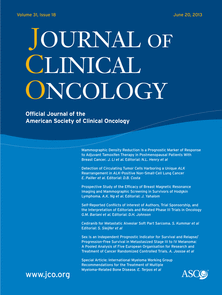
Tumour
Ewing sarcoma treatment: assessment of cyclophosphamide and etoposide on survival rates
J Clin Oncol. 2008 Sep 20;26(27):4385-93. doi: 10.1200/JCO.2008.16.5720647 patients with localized Ewing sarcoma were sorted into two risk groups based on the stage and tumour volume. Patients were allocated to the standard-risk (SR) group if their localized tumours were less than 100 mL in volume. Patients with localized tumours greater than 100 mL or with metastatic disease were allocated to the high-risk (HR) group. The 155 SR patients were then randomized to receive 4 courses of vincristine, dactinomycin, ifosfamide, and doxorubicin (VAIA) induction therapy, followed by 10 courses of either VAIA or vincristine, dactinomycin, cyclophosphamide, and doxorubicin (VACA) therapy, in order to compare the efficacy of ifosfamide versus cyclophosphamide. The 492 HR patients were randomized to receive 14 courses VAIA therapy alone or VAIA therapy and etoposide (EVAIA), in order to evaluate the impact of etoposide on survival. Following 8.5 years, results indicated that VACA and VAIA therapies provided similar survival rates in SR patients, while the addition of etoposide to VAIA therapy appeared to increase the survival rate in HR patients. It should be noted though that SR patients in the VACA group experienced a higher occurrence of acute grade 3 or 4 toxicities, mucositis, and infection and HR patients in the EVAIA group had a higher occurrence of hematologic toxicities.
Unlock the full article
Get unlimited access to OrthoEvidence with a free trial
Start TrialCritical appraisals of the latest, high-impact randomized controlled trials and systematic reviews in orthopaedics
Access to OrthoEvidence podcast content, including collaborations with the Journal of Bone and Joint Surgery, interviews with internationally recognized surgeons, and roundtable discussions on orthopaedic news and topics
Subscription to The Pulse, a twice-weekly evidence-based newsletter designed to help you make better clinical decisions
Exclusive access to original content articles, including in-house systematic reviews, and articles on health research methods and hot orthopaedic topics
Or continue reading this full article
Register Now

Subscribe to "The Pulse"
Evidence-Based Orthopaedics direct to your inbox.




































